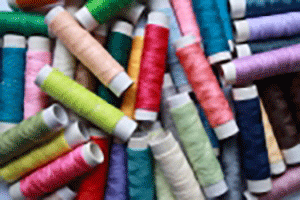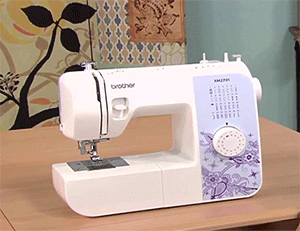 Sewing and embroidery threads might not seem like a topic to get excited about, but if you love sewing as much as I do you will understand why I get giddy over the variety of colors and fibers. I probably own more thread than I will ever use. It may sound odd, but it was my inheritance from my grandmother.
Sewing and embroidery threads might not seem like a topic to get excited about, but if you love sewing as much as I do you will understand why I get giddy over the variety of colors and fibers. I probably own more thread than I will ever use. It may sound odd, but it was my inheritance from my grandmother.
If you are new to sewing you might think the most important thing about picking out sewing thread is to match the color to your fabric. While that is important, for a professional finish, it is just as important to select the right fiber for the job.
Some threads will be too heavy for fine fabrics, while others will have a tendency to unravel or break when used with heavy fabrics. A quick rule of thumb if you find yourself staring at a wall full of thread displays is to think about the properties of the fabric you will be sewing on and choose a thread with similar properties.
The following are the more common threads you will run into:
Polyester – Polyester is a strong thread that has some stretch and give to it. This is a great option for knits. We have some great information about sewing on knits in this post.
Cotton – Cotton thread is great for light and medium weight fabrics made of cotton and linen. It does not have any stretch to it and should not be used for knits or for blended fabrics.
Cotton-wrapped polyester – This is a great all purpose thread. It looks like cotton, but stretches like polyester.
Silk – Silk threads are not only beautiful, they are very strong. These are best used on silks and wool fabrics or for decorative sewing.
Wool – Wool thread is very fibrous and will leave a mess in and on your sewing machine. These threads can be used for beautiful decorative details, but should not be used for piecing garments.
Acrylic – Like wool, acrylic is best for decorative stitching. It is thick and fibrous and will shed fibers in and around your sewing machine.
Rayon – Rayon thread has a beautiful sheen to it and is very strong. It doesn’t fray and is great for decorative work or general sewing. This is a good option when sewing leather, faux leather or other decorative heavy materials.
“Invisible” or Nylon – Nylon thread is a monofilament that is almost invisible. It can be clear or come in colors, but most people are referring to the clear or smoky hued fishing line-type thread.
Quilting – Threads made specifically for hand quilting are a medium weight thread made of cotton or cotton wrapped polyester.
Button / carpet – This is a very heavy duty thread used to hand stitch carpet seams, attach buttons and tackle other projects like mending upholstery or outdoor gear.
Embroidery – Embroidery Floss is purchased in hanks and isn’t appropriate for machine stitching. Most threads can be used in embroidery work regardless of how they are packaged.
There is certainly a lot more flexibility when choosing threads for decorative stitching. The most important thing to remember is to try to match laundering requirements. You don’t want to spend hours applying beautiful, hand embroidered touches with fibers that must be dry cleaned to a garment that is made to be washed and dried at home.
One term you may see often when referring to thread is “mercerized cotton.” This simply refers to the fact the cotton has been treated with sodium hydroxide to make it stronger, shinier and more receptive to dyes. This kind of thread is also referred to as pearl cotton.
If you are looking at the list above and thinking that picking out the right thread is too confusing, don’t worry…you will get the hang of it. In the meantime, don’t hesitate to ask a sales clerk for help if you aren’t sure. If that’s not possible, go with cotton wrapped polyester. This strong, all-purpose thread will probably be all you need for your next project.





